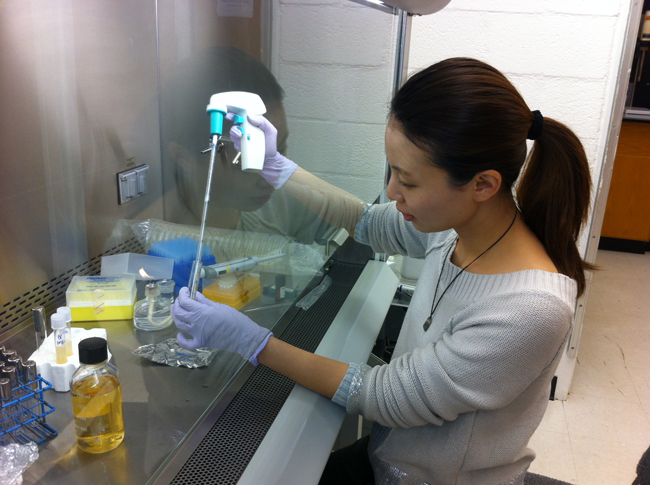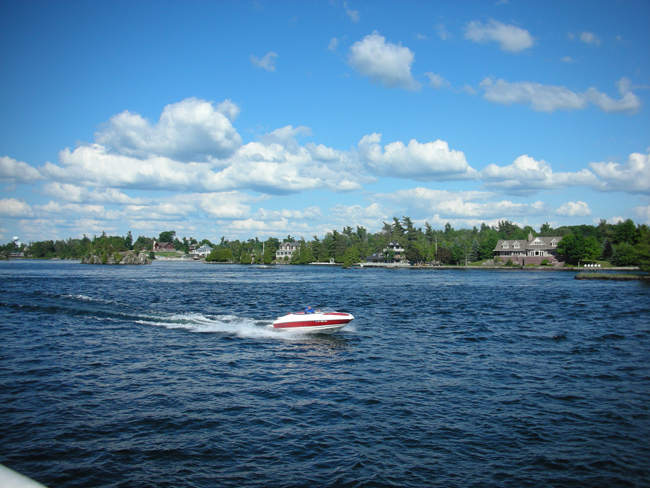Sea Grant Projects on storm hazards, climate change, fisheries health, hypoxia, harmful algal blooms
Contact:
Barbara Branca, Communications Manager, New York Sea Grant, P: 632.632.6956, E: barbara.branca@stonybrook.edu
Stony Brook, NY, March 17, 2014- New York Sea Grant (NYSG) is slated to receive a total of nearly $2.4 million from the National Oceanic and Atmospheric Administration (NOAA) to fund the first year of several research projects on prevalent marine and Great Lakes issues and to support a statewide team of extension specialists who communicate research results to stakeholders. These projects aim to mitigate and understand climate change impacts, improve the health of ecosystems, and protect fisheries and the coastal economy. Findings will help inform managers, stakeholders and policy makers to better evaluate current issues within the coastal environment, and adapt to future scenarios influenced by climate change.
New York Sea Grant Interim Director Bill Wise says, “Sea Grant’s approach of linked research, outreach and extension programs is unique among programs that deal with coastal resources and the sustainability of coastal communities. These new projects target issues of immediate relevance to New York State.”
Research teams from New York’s Great Lakes and marine districts will analyze the effect of habitat alterations on salmon restoration, dynamics of aquatic diseases, as well as toxic blooms and non-point source pollution. In addition, NYSG is partnering with regional Sea Grant programs on other research projects that focus on fish response to climate change and factors involving coastal zone management on storm damage and sea level rise in areas of the mid-Atlantic and northeast.
“We form our program in close consultation with government agencies, municipalities, businesses and private organizations interested in New York’s marine and Great Lakes resources,” continues Wise. “Sea Grant works collaboratively with these groups to put reliable, science-based information to work so that New York’s coastal economy and lifestyle can thrive and the coastal environment on which they depend remain healthful and intact.”
New York Sea Grant’s experienced extension staff brings such vital information to coastal communities, especially local businesses. New and ongoing projects include launching a business retention and expansion program in upstate NY counties to evaluate existing recreation and tourism enterprises, and helping downstate marinas and recreational fisheries businesses survey, assess and mitigate the damage wrought by severe coastal storms such as Hurricane Sandy.
For more information on New York Sea Grant’s staff, strategic plan, and descriptions of new research projects, visit our website at www.nyseagrant.org.
More Info: New York Sea Grant
New York Sea Grant (NYSG), a cooperative program of Cornell University
and the State University of New York, is one of 33 university-based
programs under the National Sea Grant College Program (NSGCP) of the
National Oceanic and Atmospheric Administration (NOAA). The NSGCP
engages this network of the nation’s top universities in conducting
scientific research, education, training and extension projects designed
to foster science-based decisions about the use and conservation of our
aquatic resources. Through its statewide network of integrated
services, NYSG has been promoting coastal vitality, environmental
sustainability, and citizen awareness about the State’s marine and Great
Lakes resources since 1971.
For updates on Sea Grant activities: www.nyseagrant.org has RSS, Facebook, Twitter, and YouTube links. NYSG also offers a free e-list sign up via www.nyseagrant.org/coastlines for NY Coastlines, its flagship publication, which, in 2014, merges with the program's e-newsletter, Currents. NY Coastlines is published several times a year.
List of New Research Project Descriptions by Institution
Institution: Stony Brook University, Stony Brook, NY

QPX distribution and persistence in the environment
A research team led by Dr. Bassam Allam, Associate Professor at the School of Marine and Atmospheric Sciences (SoMAS), will study the distribution and persistence of QPX, a disease found in clams in the marine district of NY State. The team will analyze the environmental factors that affect the distribution and presence of QPX in coastal waters. Project results will inform stakeholders about the QPX issue, and enhance restoration and policy decisions that could influence seafood businesses and industries, as well as the value and security of the resource.
The role of submarine groundwater discharge (SGD) in promoting hypoxia in Smithtown Bay
Within the western central region of the Long Island Sound (LIS), Smithtown Bay regularly experiences hypoxia in the summer months. Although hard to quantify, submarine groundwater discharge is known to release nutrients into coastal waters. The calculated total maximum daily loads that enter LIS do not include this nonpoint source that most likely contributes to eutrophication and ultimately the hypoxia that occurs in Smithtown Bay. A research team led by Dr. Henry Bokuniewicz, a Distinguished Service Professor at the School of Marine and Atmospheric Sciences (SoMAS), will conduct a project to determine if submarine groundwater discharge contributes to hypoxic occurrences in Smithtown Bay. The results should inform policies created by coastal zone managers to improve coastal water quality and habitat.
Understanding the impacts of climate change on the distribution, population connectivity, and fisheries for summer flounder (Paralichthys dentatus) in the Mid-Atlantic
Due to warming temperatures and inexorable climate change, the commercially important summer flounder population in the Middle Atlantic Bight region has responded with shifts in its distribution, and along with scientific uncertainties, it is difficult to analyze population dynamics and properly manage the fishery. As part of a research team led by Dr. Malin Pinsky of Rutgers University, Dr. Janet Nye Assistant Professor at the School of Marine and Atmospheric Sciences (SoMAS), will study how climate variability and summer flounder population dynamics relate to each other, as well as observe how the commercial and recreational fisheries respond to changes. Any changes found in fishing effort or shifts in flounder distribution will help to inform stock assessment and fishery management as well as provide insight on how to evaluate fish stocks under new climate situations. (Part of a Mid-Atlantic Regional Research Project collaboration)
Assessing bloom dynamics of the toxic dinoflagellate, Cochlodinium polykrikoides and impacts on fisheries: Are there mitigation options?
The red tide forming dinoflagellate Cochlodinium polykrikoides is responsible for shellfish and fish kills in NY waters and has also been reported to negatively impact bivalves, zooplankton and other phytoplankton. Toxic blooms of Cochlodinium are found globally, and have been claimed to cause $100M worth of annual losses in Korea’s fishing industry. Within the last couple of decades, the U.S east coast has experienced an increase in significant blooms. A team led by Dr. Christopher Gobler, professor at SoMAS will measure the dynamics and distribution of the Cochlodinium blooms, and assess the growth and survival of shellfish and water quality under bloom conditions. This research project should contribute to a better understanding of Cochlodinium bloom impacts on fisheries and inform ways to improve management plans to mitigate their negative impacts.
Institution: Cornell University, Ithaca, NY

The potential impact of VHSV on future population recovery of St. Lawrence River muskellunge
In the upper St. Lawrence River, muskellunge, a top predator and economically important sportfish, has not bounced back from the viral hemorrhagic septicemia (VHS) epidemic in the Great Lakes. This disease not only hinders the muskellunge population itself, but it also hinders the economic benefit supplied to the Thousand Islands Region. A research project led by Dr. Rodman Getchell, senior researcher at the College of Veterinary Medicine, will examine the interaction between VHS and fish population genetics in order to better understand the relationship between VHS virulence and muskellunge susceptibility. Project results will help managers and policy makers protect the $1.2 billion/year worth of freshwater sport fisheries in New York, as well as the fisheries that contribute $4.2 billion/year to communities around the Great Lakes. [PHOTO: Alexandria Bay, located on the St. Lawrence River in the heart of the Thousand Islands region in upstate New York's northern Jefferson County.]
Institution: SUNY College of Environmental Science and Forestry
Atlantic Salmon Restoration in Great Lakes Tributaries: An Ecological and Bioenergetics Approach
Restoration of native Atlantic salmon populations to Lake Ontario tributaries will economically benefit coastal communities by providing increased opportunities for anglers. Successful restoration will require information about salmon habitat needs and how a changing climate and human activities will impact restoration. Dr. Neil Ringler, Vice Provost of Research and Director of McIntire-Stennis Forestry Research at ESF will conduct research on Atlantic salmon restoration in the rivers of the Great Lakes by using bioenergetics and ecological methods. These methods will help analyze what tributaries and particular strains are suitable for Atlantic salmon in the future.
Institution: Woods Hole Oceanographic Institution, Woods Hole, MA
(North East Regional Research Project administered by Woods Hole Sea Grant)
Buy out or build back? A comparative assessment of approaches to employing public funding to vulnerable coastal properties in the northeastern United States
Superstorm Sandy that struck the Northeast coastal states stirred up some questions on how to deal with the aftermath of this and future damaging storms. Options include banning development, rebuilding damaged property, or buying-out those properties. Current responses to storms, erosion, and sea-level rise may consist of beach nourishment and armoring, but these responses may have costs of their own. Dr. Porter Hoagland, a senior research specialist in the marine policy center of the Woods Hole Oceanographic Institution, will conduct a comparative assessment of approaches in public funding to susceptible coastal areas. The legal and economic aspects of current policies and laws will be analyzed to advise decision-makers and stakeholders on mitigation and responses to coastal “blows.”
Institution: Clark University, Worcester, MA
(North East Regional Research Project administered by WHSG)
Coastal hazards and northeast housing values: Comparative implications for climate change adaptation and community resilience
Coastal areas of the Northeast US are targets for climate change and sea level rise impacts, and current adaptive measures are not enough to shield shoreline communities. Damages from these impacts can harm property and land that is worth billions of dollars. Public and private adaptations to these impacts are dependent on the housing and property market responses. Dr. Robert Johnston, Professor at Clark University, will conduct a project to study real estate market outcomes that interact with coastal dangers. This study will include workshops for regional stakeholders, policymakers, and coastal communities. Project results will inform community responses and help infer conclusions from models of hazard adaptations.
More Info: New York Sea Grant
New York Sea Grant (NYSG), a cooperative program of Cornell University
and the State University of New York, is one of 33 university-based
programs under the National Sea Grant College Program (NSGCP) of the
National Oceanic and Atmospheric Administration (NOAA). The NSGCP
engages this network of the nation’s top universities in conducting
scientific research, education, training and extension projects designed
to foster science-based decisions about the use and conservation of our
aquatic resources. Through its statewide network of integrated
services, NYSG has been promoting coastal vitality, environmental
sustainability, and citizen awareness about the State’s marine and Great
Lakes resources since 1971.
For updates on Sea Grant activities: www.nyseagrant.org has RSS, Facebook, Twitter, and YouTube links. NYSG also offers a free e-list sign up via www.nyseagrant.org/coastlines for NY Coastlines, its flagship publication, which, in 2014, merges with the program's e-newsletter, Currents. NY Coastlines is published several times a year.